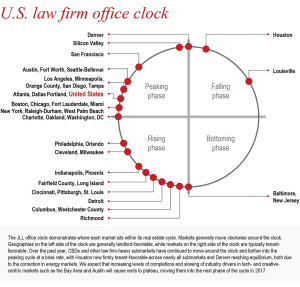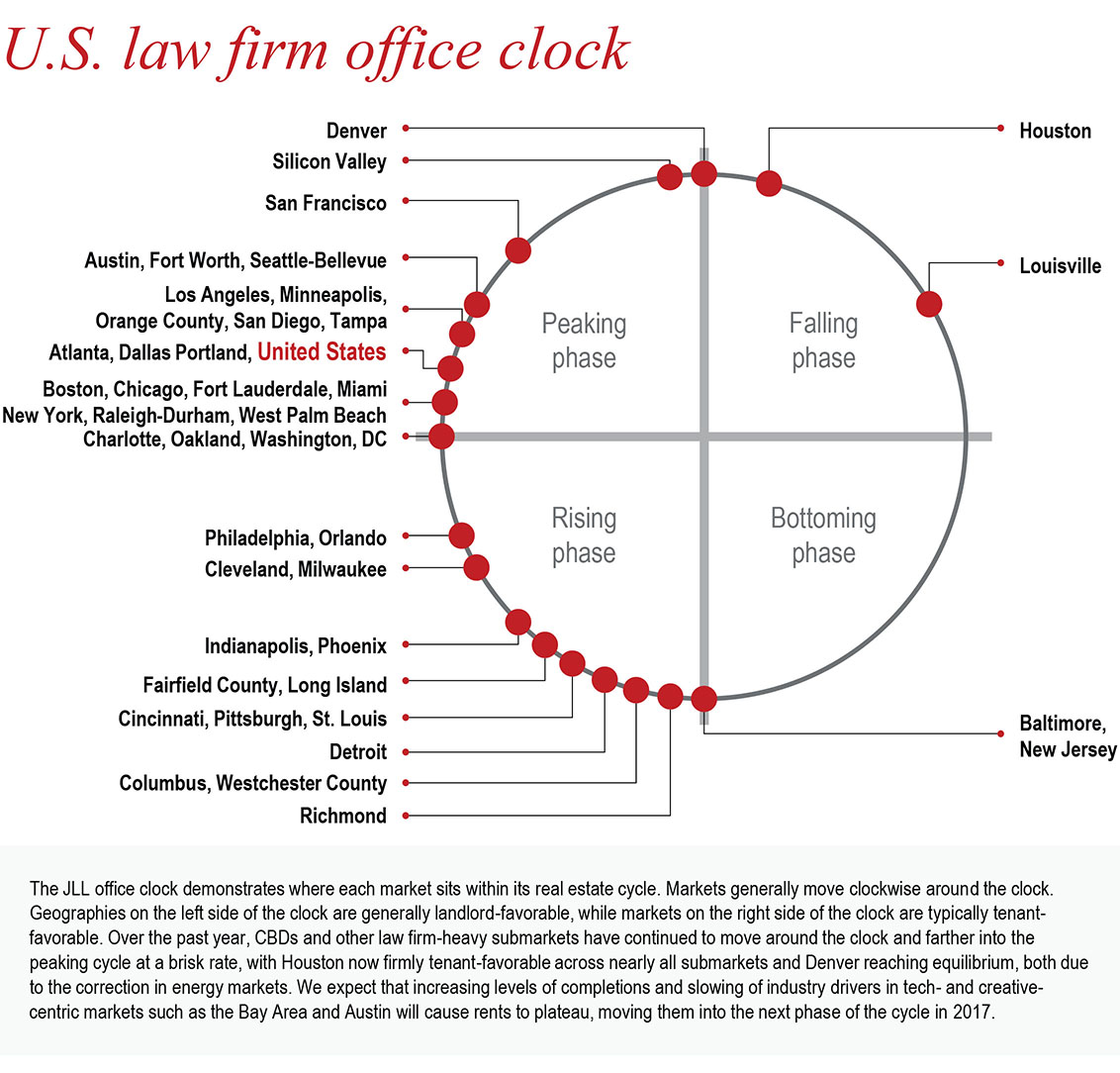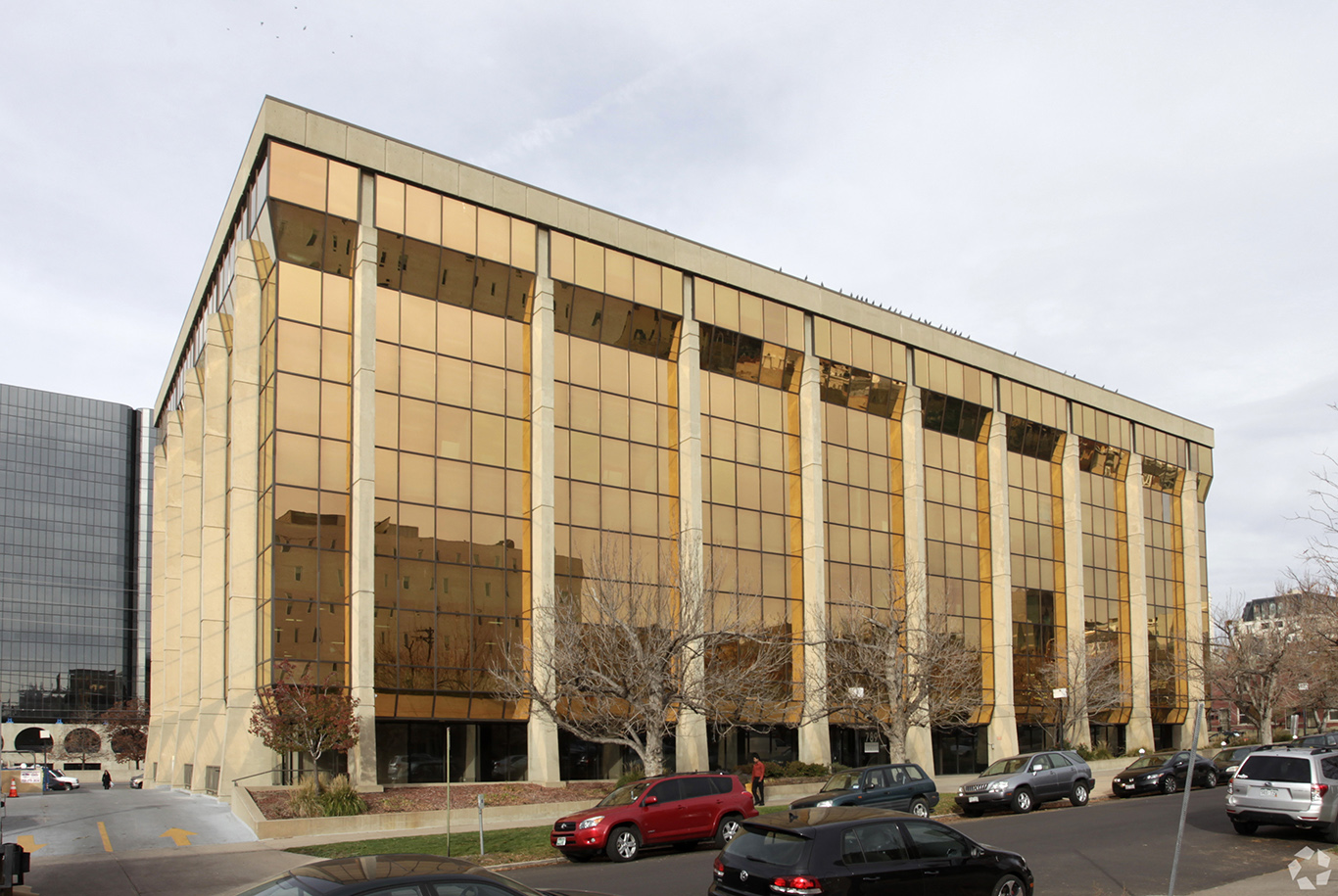Denver, CO – Despite rising rents in many U.S. markets, the legal industry can still find opportunities to improve real estate efficiency, according to JLL’s latest annual Law Firm Perspective. Using JLL’s proprietary benchmarking database revealed in the report, law firms can now quantify improvements in their real estate right-sizing.
“Law firms have made significant real estate efficiency gains this year, but the pressure to reduce real estate costs continues,” observed Tom Doughty, Co-lead of JLL’s law firm practice group. “JLL’s new benchmarking data reveals whether a law firm’s square footage and rent ratios are below, above or in line with the industry average, and what other firms consider to be ideal.”
 Amidst decelerating gross revenue growth, profits-per-partner and revenue-per-lawyer, AmLaw 100 law firms are under pressure to reduce their second-largest expense: real estate. The typical U.S. law firm has sharply reduced its office footprint by 22.2 percent, from a historical average of 976 square feet to 760 square feet today, and cut annual U.S. rent-per-attorney by 12.1 percent, from a historical average of $38,535 to $33,879 today. Offices in Denver were seen to decrease in size by 13.3 percent and rents by 6.25 percent, with a targeted desire of a further 15.4 percent decrease in square footage and 6.7 percent decrease in rent-per-attorney.
Amidst decelerating gross revenue growth, profits-per-partner and revenue-per-lawyer, AmLaw 100 law firms are under pressure to reduce their second-largest expense: real estate. The typical U.S. law firm has sharply reduced its office footprint by 22.2 percent, from a historical average of 976 square feet to 760 square feet today, and cut annual U.S. rent-per-attorney by 12.1 percent, from a historical average of $38,535 to $33,879 today. Offices in Denver were seen to decrease in size by 13.3 percent and rents by 6.25 percent, with a targeted desire of a further 15.4 percent decrease in square footage and 6.7 percent decrease in rent-per-attorney.
Good news for law firms: rent relief, more options in the pipeline
Over the past 18 months, sustained demand for Class A CBD space has led to double-digit rental rate increases in many markets. However, some relief will soon arrive with 47.7 million square feet of trophy office space coming online across the United States in late 2016 and early 2017. Law firms with upcoming lease expirations will have opportunities to negotiate better deal terms and find new space in premium locations.
While new Class A office buildings command an average premium of 12.1 percent above market rents, JLL anticipates that law firms will find sublease opportunities and attractive, cost-effective options in non-trophy office buildings in traditional areas such as Chicago’s Loop and Midtown Manhattan. For value-conscious firms, landlords of second-generation space will likely boost concession packages to keep assets with less-efficient floorplates and fewer in-building amenities competitive.
Despite right-sizing, single-attorney offices remain the norm
So far, law firm footprint reductions have come from the adoption of automated libraries and office systems, rather than a dramatic change in workplace strategy. However, many have shrunk cubicles for support staff and outsourced some workflow to smaller, less expensive markets.
“Law firms in Denver are focused on delivering a workplace that contributes toward attracting and retaining talent,” said Mike Rooks, Executive Vice President with JLL Denver. “Though we don’t see law firms moving to the modern coworking or shared space designs that many technology companies prefer, we do see that they strongly consider building access and more modern office redesigns. Most of the relocations have been to new buildings in LoDo.”
Graphic courtesy of JLL, Source: JLL Research









